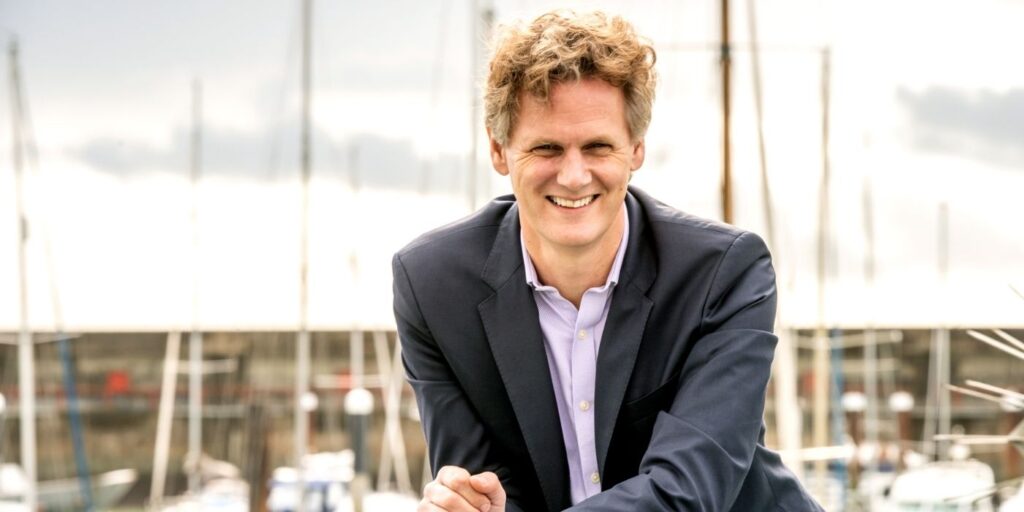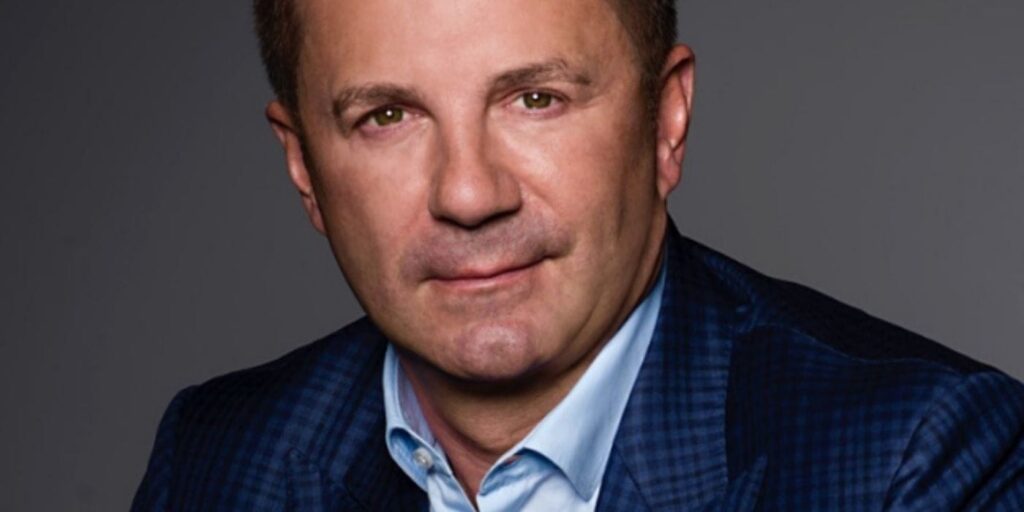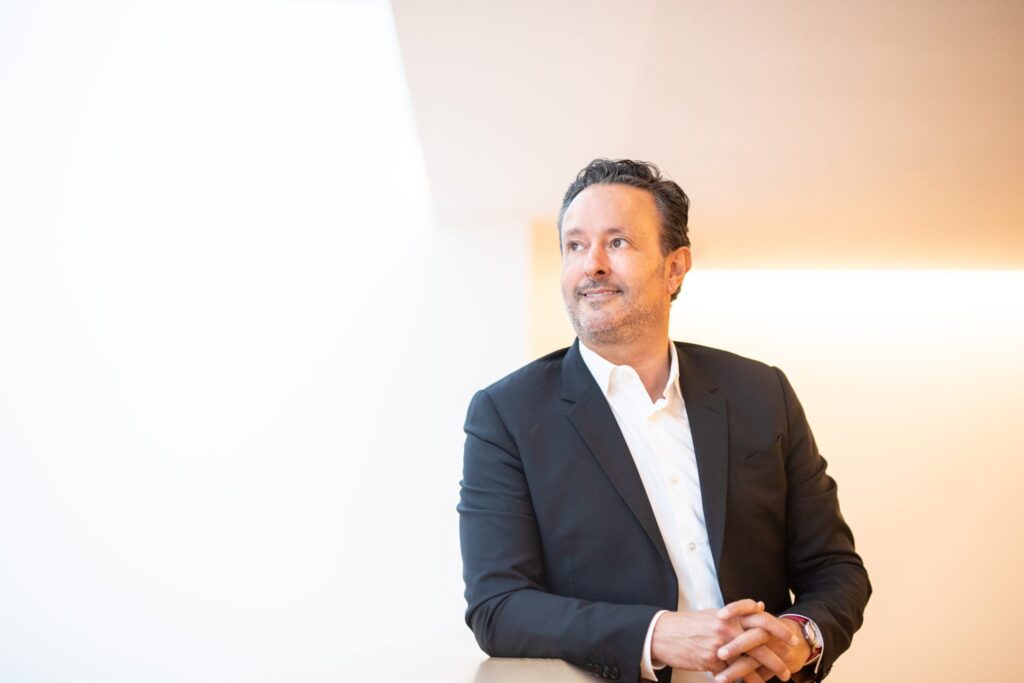Olen nostanut tähän kesäkuun kansainväliseen uutiskirjeeseemme 3 globaalia huippuasiantuntijaa antamaan inspiraatiota ja uusia näkökulmia miten johtaa ja kehittää organisaatiotasi jatkuvan disruption keskellä, sekä millaista johtajuutta ja toimenpiteitä tähän vallitsevaan aikaan tarvitaan. Muistutan vielä, että virtuaaliset tapahtumat mahdollistavat edelleenkin entistäkin helpommin ja kustannustehokkaammin kansainvälisten huippuasiantuntijoidemme hyödyntämisen yrityksesi sisäisissä ja ulkoisissa tilaisuuksissa. Asiakkaanamme olet myös tervetullut hyödyntämään MySpeaker Studiotamme. Olethan yhteydessä, niin olemme mielellämme avuksi tapahtumienne puhujasisältöjen sekä virtuaaliratkaisuiden osalta. Kohti ääretöntä ja sen yli! Susanna Hagelstam, Senior Account & International Speaker Relations Manager
Caspar Craven, The High-Performance Teamwork Specialist:
 Building a Backbone of Resilience
Not knowing what the future holds is one of the toughest challenges that leaders face right now. Get your preparations and decisions right and you’re way ahead of the competition. Get it wrong and it’s an existential threat.
What strategies work best to make the right calls? It’s helpful to gain insights and useful data points from looking back and studying history, and looking to the future from ‘expert’ predictions.
Above all else though, one of the skills that you and your team need is the ability to be resilient which links directly to making hard decisions with less than perfect information.
McKinsey Global research finds that agile organisations emphasise quick,efficient and continuous decision making preferring 70% probability now vs 100% probability later.
How should leaders think about this? How do we balance the need for certainty and need for uncertainty?
The desire for perfection, the aim to get 100% arises from a fear of getting it wrong. Far too often I’ve seen people crumble when they get a decision wrong and are unable to move forward. It becomes a repeating pattern and results in inertia. The very opposite of what you need to be able to adapt quickly.
What levers can leaders use to encourage them and their team to think of aiming for 70% vs 100%?
Here’s three simple ideas:
1) Use the language of science. Talk about running experiments. We’ll try this and quickly evaluate what happens and then adapt. It’s less threatening than “we’re betting the shop on this one idea”.
2) Aim to make trust building an infectious habit. It’s harder to make decisions at 70% when there’s little trust in the team and people are fearful of how “failure” will be viewed. Have the debate in your team around what behaviours build trust and what erodes it. From all the workshops we’ve done in this area, I’ll be amazed if you don’t come away with fresh insight.
3) Praise the behaviours you want to see more of like the ability to own mistakes and course correct. It’s the clearest message you can send about the way you want the team to adapt.
It’s an investment worth making – MIT research found that agile firms grow revenues 37% faster and and generate 30% higher profits than non-agile competitors.
The backbone of resilience is the ability to make decisions and then to be able to deal with the consequences of those decisions. And adapt again. And again. It’s a process that never stops. That can be exhausting for people who don’t like to make decisions! Small adjustments like the ideas above can make a big difference.
Tutustu Caspar Craveniin ja lue lisää!
Building a Backbone of Resilience
Not knowing what the future holds is one of the toughest challenges that leaders face right now. Get your preparations and decisions right and you’re way ahead of the competition. Get it wrong and it’s an existential threat.
What strategies work best to make the right calls? It’s helpful to gain insights and useful data points from looking back and studying history, and looking to the future from ‘expert’ predictions.
Above all else though, one of the skills that you and your team need is the ability to be resilient which links directly to making hard decisions with less than perfect information.
McKinsey Global research finds that agile organisations emphasise quick,efficient and continuous decision making preferring 70% probability now vs 100% probability later.
How should leaders think about this? How do we balance the need for certainty and need for uncertainty?
The desire for perfection, the aim to get 100% arises from a fear of getting it wrong. Far too often I’ve seen people crumble when they get a decision wrong and are unable to move forward. It becomes a repeating pattern and results in inertia. The very opposite of what you need to be able to adapt quickly.
What levers can leaders use to encourage them and their team to think of aiming for 70% vs 100%?
Here’s three simple ideas:
1) Use the language of science. Talk about running experiments. We’ll try this and quickly evaluate what happens and then adapt. It’s less threatening than “we’re betting the shop on this one idea”.
2) Aim to make trust building an infectious habit. It’s harder to make decisions at 70% when there’s little trust in the team and people are fearful of how “failure” will be viewed. Have the debate in your team around what behaviours build trust and what erodes it. From all the workshops we’ve done in this area, I’ll be amazed if you don’t come away with fresh insight.
3) Praise the behaviours you want to see more of like the ability to own mistakes and course correct. It’s the clearest message you can send about the way you want the team to adapt.
It’s an investment worth making – MIT research found that agile firms grow revenues 37% faster and and generate 30% higher profits than non-agile competitors.
The backbone of resilience is the ability to make decisions and then to be able to deal with the consequences of those decisions. And adapt again. And again. It’s a process that never stops. That can be exhausting for people who don’t like to make decisions! Small adjustments like the ideas above can make a big difference.
Tutustu Caspar Craveniin ja lue lisää!
Peter Hacker, Cyber Security & Cyber Crime Thought Leader
 Cybercrime : Unlocking the mystery at Board Level:
An unprecedented high number of sophisticated attacks (including non-kinetic warfare) require Boards to reassess their strategies – from cyber security, incident response, insurance to stakeholder management – match emerging risk landscape developments.
The past 15 months have shown us at Board Level that we have to be increasingly prepared for extraordinary, parallel risk situations that not only suddenly affect the global economy, but can also affect the everyday life of each and every one of us. Unparalleled risks such as pandemics, supply chain interferences and cyber threats go hand in hand, and do not respect any kind of borders.
There are many lessons we can learn from the ‘real virus’ and apply to cyber security. In a highly networked, interconnected and interdependent world, we virtually continue our professional and private lives. Such changes require in-depth taking care of our cyber hygiene and address cyber threats to – external remote services or desktop protocols – on the front foot. Unfortunately, the reality is looking slightly different. Too many times phishing email and malware attacks exploited remotely accessible accounts from public facing applications and got entire operation stopped. Such compromised devices helped spoofing legitimate user, and install malicious code on the compromised endpoint, escalate privilege to get access to sensitive information, and encrypt business critical processes resulting into a ransom over exfiltrated files.
A clear evidence of the shift in digital criminals‘ tactics are the latest massive Ransomware – the sophistication of the intruders – the dedicated distributed denial of service (DDoS), phishing attacks, network management system software or service system exploits and supply chain hacks in Europe and North America causing material data thefts, supply chain disruptions, business disturbances and in some cases ransom payments. Hard hit sectors in 2021 are Aviation, Communication, Media and Technology, Manufacturing, Food Processing, Utility, Energy, Retail, Healthcare, Financial Services, Governments, Military and Education – size does not necessarily matter, but jurisdiction does –
Five years ago, Cyber Security was not in front of minds of most boards. 10 years ago, most boards even did not know what the term meant. Today most boards are paying attention, some more than others, due to exponential incident cost. People are starting to realize whatever this intangible, often silent threat is, and what it means.There can be massive Fiduciary Duties, Chief Executive Officer get fired or evenworse costly shareholder Class Actions.
Any Company or Director can become victim of Cybercrime at any time. It’s not a matter of ‘WHEN OR IF’ an attack occurs. If you want to survive a catastrophic cyber incident in today’s world, you better take the threat as real, imminent and think outside the classic IT–Security box, understand your fiduciary duties, stress test regularly in real terms your response plan, incident and insurance partners. Cybercrime is a business and not just a technical issue. The enterprise is at risk if platforms, systems are outdated and employees not continuously trained.
An attack may not necessarily be avoided, but the consequences can be limited if cyber risks are treated consist as fundamental Board Topic, broad Multifactor-Authentication is required, Network Zoning and a Zero Trust Security Concept applied. In any case, we shall never forget past cyber attacking vectors may not represent necessarily the future threat trigger. As Cyber Experts it is our duty to support Boards with Actionable Intelligence and recommend Cyber Security Expertise be represented at such Level.
Tutustu Peter Hackeriin ja lue lisää!
Cybercrime : Unlocking the mystery at Board Level:
An unprecedented high number of sophisticated attacks (including non-kinetic warfare) require Boards to reassess their strategies – from cyber security, incident response, insurance to stakeholder management – match emerging risk landscape developments.
The past 15 months have shown us at Board Level that we have to be increasingly prepared for extraordinary, parallel risk situations that not only suddenly affect the global economy, but can also affect the everyday life of each and every one of us. Unparalleled risks such as pandemics, supply chain interferences and cyber threats go hand in hand, and do not respect any kind of borders.
There are many lessons we can learn from the ‘real virus’ and apply to cyber security. In a highly networked, interconnected and interdependent world, we virtually continue our professional and private lives. Such changes require in-depth taking care of our cyber hygiene and address cyber threats to – external remote services or desktop protocols – on the front foot. Unfortunately, the reality is looking slightly different. Too many times phishing email and malware attacks exploited remotely accessible accounts from public facing applications and got entire operation stopped. Such compromised devices helped spoofing legitimate user, and install malicious code on the compromised endpoint, escalate privilege to get access to sensitive information, and encrypt business critical processes resulting into a ransom over exfiltrated files.
A clear evidence of the shift in digital criminals‘ tactics are the latest massive Ransomware – the sophistication of the intruders – the dedicated distributed denial of service (DDoS), phishing attacks, network management system software or service system exploits and supply chain hacks in Europe and North America causing material data thefts, supply chain disruptions, business disturbances and in some cases ransom payments. Hard hit sectors in 2021 are Aviation, Communication, Media and Technology, Manufacturing, Food Processing, Utility, Energy, Retail, Healthcare, Financial Services, Governments, Military and Education – size does not necessarily matter, but jurisdiction does –
Five years ago, Cyber Security was not in front of minds of most boards. 10 years ago, most boards even did not know what the term meant. Today most boards are paying attention, some more than others, due to exponential incident cost. People are starting to realize whatever this intangible, often silent threat is, and what it means.There can be massive Fiduciary Duties, Chief Executive Officer get fired or evenworse costly shareholder Class Actions.
Any Company or Director can become victim of Cybercrime at any time. It’s not a matter of ‘WHEN OR IF’ an attack occurs. If you want to survive a catastrophic cyber incident in today’s world, you better take the threat as real, imminent and think outside the classic IT–Security box, understand your fiduciary duties, stress test regularly in real terms your response plan, incident and insurance partners. Cybercrime is a business and not just a technical issue. The enterprise is at risk if platforms, systems are outdated and employees not continuously trained.
An attack may not necessarily be avoided, but the consequences can be limited if cyber risks are treated consist as fundamental Board Topic, broad Multifactor-Authentication is required, Network Zoning and a Zero Trust Security Concept applied. In any case, we shall never forget past cyber attacking vectors may not represent necessarily the future threat trigger. As Cyber Experts it is our duty to support Boards with Actionable Intelligence and recommend Cyber Security Expertise be represented at such Level.
Tutustu Peter Hackeriin ja lue lisää!
Terence Mauri, Expert on the Future of Leadership:
 Terence Mauri is an outspoken and influential expert on the future of leadership. From business to workforce disruption, leaders are going through turbulent times but is enough being done to scale agile, resilient and daring futures?
Terence holds Entrepreneur Mentor in Residence roles at MIT and London Business School and has over 20 years experience of helping leaders bounce back from adversity and move beyond disruption.
Drawing on emerging trends and signals across several industries, his actionable keynotes and workshops prepare leaders and their organisations for radical, brave leadership through deep uncertainty and complex futures.
Not Taking a Risk is a Risk!
Terence delivers top rated talks and actionable content on how to win the future through his partnerships at Hack Future Lab and MIT. His Inc. column has over 1 million views a month.
This means new growth strategies, battle tested ideas and winning mindsets needed to scale daring and resilient leaders who embrace disruption and re-imagine potential.
As one of the most in-demand speakers in the world today, Terence Mauri aims to ignite a disruption mindset at every level in your business.
Tutustu Terence Mauriin ja lue lisää!
Terence Mauri is an outspoken and influential expert on the future of leadership. From business to workforce disruption, leaders are going through turbulent times but is enough being done to scale agile, resilient and daring futures?
Terence holds Entrepreneur Mentor in Residence roles at MIT and London Business School and has over 20 years experience of helping leaders bounce back from adversity and move beyond disruption.
Drawing on emerging trends and signals across several industries, his actionable keynotes and workshops prepare leaders and their organisations for radical, brave leadership through deep uncertainty and complex futures.
Not Taking a Risk is a Risk!
Terence delivers top rated talks and actionable content on how to win the future through his partnerships at Hack Future Lab and MIT. His Inc. column has over 1 million views a month.
This means new growth strategies, battle tested ideas and winning mindsets needed to scale daring and resilient leaders who embrace disruption and re-imagine potential.
As one of the most in-demand speakers in the world today, Terence Mauri aims to ignite a disruption mindset at every level in your business.
Tutustu Terence Mauriin ja lue lisää!
